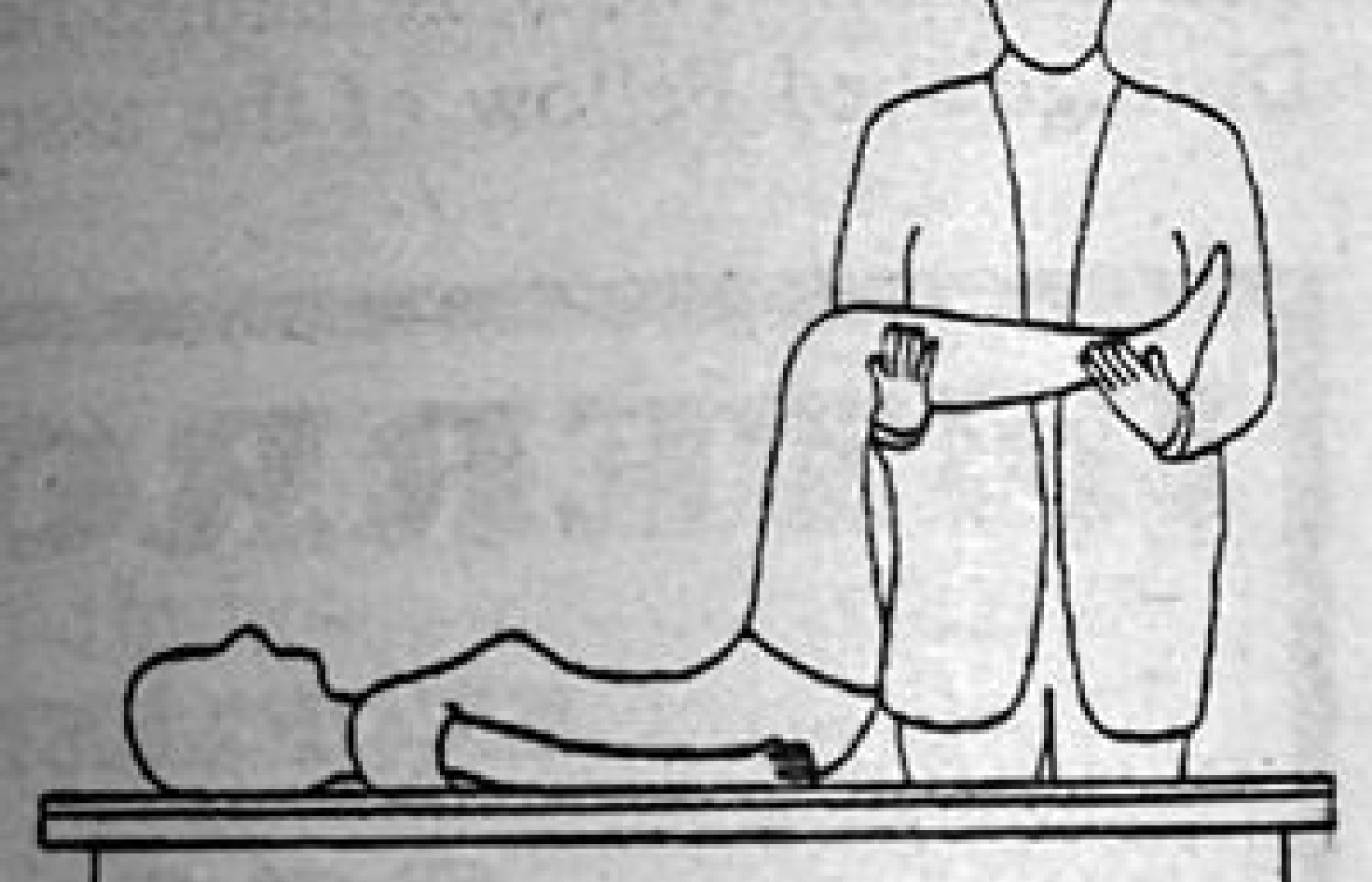Many relevant diagnostic signs are not performed deliberately by the examiner or by the patient at the examiner’s direction. They are observed as the patient reacts to their condition. Fortin’s finger sign, Minor’s sign, and Vanzetti’s sign are three examples of this principle.
The 90/90 Test As a Reliability Indicator of 90/90 Treatment Success
Background: The "90/90 test" is extensively used by health care professionals to screen potential candidates for 90/90 supine distraction therapy. The test is easy to perform, and takes only minutes to do. (See side bar). A positive test (relief from pain) indicates the potential success of treatment with the 90/90 supine distraction treatment system.
This specialized treatment system derives its name from the precise body positioning provided by the equipment: 90 degrees at the hips and 90 degrees at the knees, combined with pelvic tilt.
The Phillips Institute of Technology conducted a study to determine the correlation between a positive 90/90 test and successful treatment of chronic low back pain using 90/90 supine distraction.
Methods: Twenty-one patients with chronic low back pain (longer then three months duration and unresponsive to regular chiropractic management) completed a pain scale questionnaire, full case history, and complete physical examination, including the 90/90 test. Seven patients had a negative (increase in pain) 90/90 test. Fourteen patients had a positive (decrease in pain) 90/90 test.
All patients, including those with a negative 90/90 test, were randomly assigned to two groups. Group one had six consecutive days of 90/90 supine distraction treatment. The first 90/90 treatment session lasted ten minutes. Sessions were increased by 5 minutes each to a maximum of 30 minutes.
Group 2 had 8 consecutive 90/90 treatments, the first lasting 15 minutes. Sessions were increased in 15 minute increments to a maximum of 60 minutes. Both groups were re-evaluated after the last 90/90 treatment session.
Results: Of the 7 who had a negative 90/90 test, a 45 percent had an increase in pain with 90/90 treatment, and 55 percent had a decrease in pain. Of those having a positive 90/90 test, none had an increase in pain. In fact, 90 percent had a decrease in pain with 90/90 treatment. The remaining ten percent had no change in pain.
Conclusions: The results indicate that a positive 90/90 test is an extremely reliable indicator of therapeutic (pain relieving) benefit of the 90/90 supine distraction treatment program.
As such, this simple test should be incorporated into every doctor's screening procedure for patients with chronic low back pain. When the test is positive, the patient can benefit from 90/90 supine distraction treatment. With the proper equipment, this program can be easily administered in the clinic, and can also be used at home.

- With the patient lying supine on the exam table with the legs out and fully straight, the examiner passes his hands beneath the lumbar spine to determine the degree of lumbar lordosis.
- Next, the straight leg raising test (Lasegue) is performed.
- Flex the patient's knees while further flexing the hips to a full 90 degrees (which may not have been possible during the straight leg test). Then flex the knees to 90 degrees. Both the thighs and the knees must be exactly 90 degrees.
- The examiner then lifts under the calves of the patient's legs, sufficient to lift the buttocks off the table. This flattens the lumbar spine by tilting the pelvis through the hip joints.
- Do not ask the patient if this feels better. If the patient volunteers a sense of relief of low back pain during the upward phase of this simple maneuver then the test is positive and indicates 90/90 supine distraction and should be considered a treatment option.
Andreis M. Kleynhans, D.C.,
Michael J. Wood, D.C.,
Rosemary Keating, D.C.
Dominic Marziano, D.C.
Phillip Institute of Technology
Victoria, Australia



